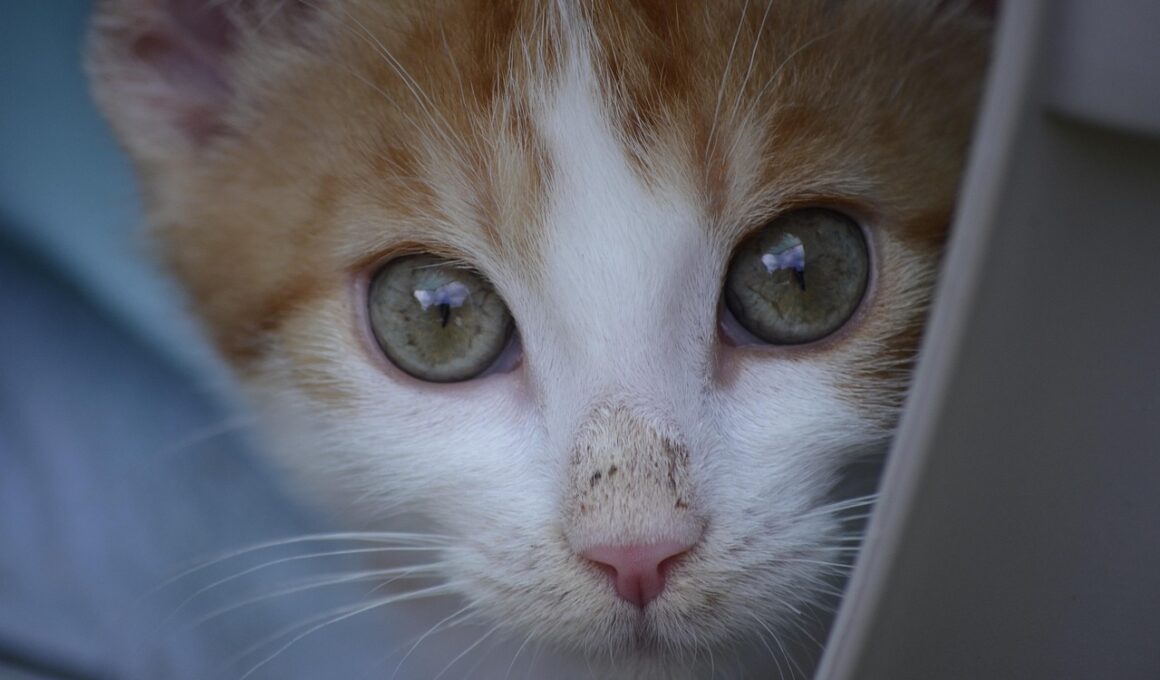Global Challenges in Reuniting Lost Cats with Their Owners
Reuniting lost cats with their owners is an issue faced worldwide, consuming countless resources and efforts from both individuals and organizations. Many cats go missing due to various reasons like escapes, natural disasters, or owner negligence. The challenge typically begins when a cat wanders off into unfamiliar territory, increasing its chances of becoming lost. To address these challenges effectively, it is crucial for communities to be proactive. Educating cat owners on preventive measures such as microchipping and proper containment can significantly mitigate the risk of cats going missing. Since cats can hide well, employing local search tactics, including talking to neighbors and distributing flyers, is essential. Online resources like community Facebook groups and lost pet websites can accelerate the process. Nevertheless, despite these proactive measures, numerous cats remain unclaimed. Therefore, awareness campaigns about local rescues and shelters must be bolstered to ensure lost cats are brought to safe environments. Collaborations among local shelters and community members are necessary to create better systems for communicating sightings and ensuring these animals find their way home.
Moreover, technology plays an important role in assisting with the reunion of lost cats. Innovative tools such as GPS collars and tracking apps have gained popularity in recent years. These devices provide real-time tracking updates, thus helping to locate lost pets more quickly. Still, cost considerations may limit adoption rates among low-income families. Additionally, not all cats can tolerate wearing collars or tracking devices, posing a potential barrier for some. As communities continue to explore technology-based solutions, it remains essential to balance these advancements with traditional methods. Partnerships with local veterinary clinics can facilitate access to microchips and resources for shelters to use advanced identification techniques. Utilizing social media campaigns can also raise awareness about a missing cat, harnessing community power to assist. Smart marketing for lost pet notifications increases visibility, which can ultimately lead to successful reunions. Despite the commendable advances, challenges around communication and sharing information remain prevalent. Communities need to streamline processes that allow owners and shelters to interact more effectively when a lost pet is reported. Ensuring continuous updates about missing cases will improve outcomes for cats and their families globally.
The Role of Shelters in Reunification
Animal shelters act as vital resources in the recovery of lost cats, cultivating relationships within the community to facilitate reunions. They receive numerous reports of lost and found pets, creating databases to track successful reunification patterns. Moreover, shelters often take in strays, where they assess the animals and scan for microchips to identify owners. This process not only protects the well-being of these lost cats but also ensures responsible care while searching for their families. However, the overwhelming number of animals needing help can strain resources and lead to various challenges, including space constraints and funding. To combat this, shelters are encouraged to engage local volunteers and dive into fundraising initiatives. As shelters work with local communities, collaboration can help increase adoption rates while ensuring lost cats have a safe haven. Additionally, utilizing social media to share information about adoptable and lost pets maximizes reach. Consequently, local shelters must prioritize establishing connections with pet owners who may need advice and assistance. Knowledge sharing can lead to a more cohesive effort to reunite lost cats, allowing shelters to track emerging trends in specific localities that might negatively impact cats.
Furthermore, public education regarding the importance of spaying and neutering plays an essential part in addressing the problem of lost cats. Overpopulation leads to increased instances of strays roaming neighborhoods, subsequently complicating the reunification process. Promoting responsible pet ownership habits can drastically reduce the number of cats that become lost or end up in shelters. Low-cost spaying/neutering clinics help alleviate financial constraints that many owners face, creating greater access for all. Ensuring that community members are aware of these resources promotes responsible ownership and can, ultimately, enhance local cat safety. Educational programs about the importance of identification—like collars with tags and microchips—when combined with spay/neuter campaigns can lower disappearances. Several successful programs have been established globally to target regions struggling with cat overpopulation. When public awareness is raised through these initiatives, it can create a supportive environment for reuniting lost pets with their families. Overall, coordinating local efforts among shelters, veterinarians, and animal advocacy organizations ultimately ensures that lost cats receive the care and attention they deserve throughout the process.
The Impact of Community Support
Community support networks play a pivotal role in reintegrating lost cats back into their homes. Neighbors may unexpectedly come together to help in times of distress, taking it upon themselves to search local areas and post on social media about missing pets. Leveraging neighborhood apps or platforms creates a modern method for disseminating information regarding lost cats, allowing for real-time updates. Notably, street teams formed from local volunteers can conduct organized search efforts, using flyers and social media posts that capture the attention of residents. Moreover, animal-loving individuals can assist by fostering found cats until their owners are located, providing a safe space while ensuring the cat’s well-being. Integrating lost cat networks into local communities enhances visibility and accelerates the recovery process. Everything from setting up community alerts to hosting fundraisers can raise awareness about the issue beyond individual neighborhoods. Building long-lasting connections fosters a sense of shared responsibility, encouraging individuals to support one another. Effective community engagement ensures that lost cats are spotted faster, ultimately leading to successful reunions, while also helping cat owners navigate the stressful experience of losing a beloved pet.
Still, there are crucial emotional aspects involved in the reuniting process that cannot be ignored. Losing a cat can take a significant toll on pet owners, causing feelings of panic, anxiety, and hopelessness. Educational programs aimed at emotional resilience are instrumental throughout this journey. Offering resources on coping strategies can aid those affected by the loss of a furry companion. Support groups run by animal welfare organizations help create safe spaces for owners to share their experiences and garner advice from others who have faced similar challenges. These connections can alleviate the emotional burden. Strategies like having a detailed action plan upon discovering a cat is missing can empower owners. Educating them on methods to remain calm and collected when searching for a lost cat can enhance their chances of success. Comprehensive programs incorporating emotional support, mental well-being, and practical strategies promote more effective outreach. When organizations focus on the mental and emotional health of owners, they contribute to lower rates of despair, which can further bolster community-wide initiatives aimed at reuniting lost cats with their owners.
Future Directions for Cat Rescue Efforts
Looking ahead, global cat rescue initiatives must evolve to meet emerging challenges. Continued collaboration among local entities worldwide can lead to strengthened networks, enhancing communication strategies designed to assist in lost pet cases. Integrating state-of-the-art tracking technologies into traditional methods will offer communities an innovative approach to solving pressing issues. Conducting regular workshops focused on responsible pet ownership and recovery measures can help build a more knowledgeable public. Furthermore, each community must prioritize tailoring their strategies to address unique local needs and specific cat-related challenges. Continued investment in education and awareness will foster a generation of responsible owners and community leaders. These enhancements can ensure each local entity thrives by applying best practices learned through collaborative efforts. Researching the effectiveness of both conventional approaches and modern technology will contribute valuable insights into successful reunification. By focusing on continuous improvement and adaptability, communities can craft comprehensive systems that create lasting impacts on global cat rescue efforts. Addressing critical themes such as cat overpopulation, emotional well-being, and technology integration will foster a brighter future for lost cats and their families.
In summary, tackling the myriad challenges related to reuniting lost cats with their owners requires a multi-faceted approach. By combining proactive community engagement, technology, and educational programs, we can cultivate landscapes equipped to facilitate successful reunification. The dedicated work of animal welfare organizations and local shelters is paramount to improving the lives of countless lost cats worldwide. Through a collective commitment, we can bridge the gap between lost pets and their families while fostering responsible cat ownership. Bringing together various stakeholders will create comprehensive systems of support that engage pets, owners, and community members alike. As we raise awareness and provide the necessary resources, we can reduce the number of cats that fall through the cracks. Nurturing an environment that promotes healthy, safe cat ownership while enhancing the emotional well-being of owners will reap benefits for everyone involved. With ongoing support at local and global levels, meaningful progress can be achieved and maintained. Ultimately, the journey to reunifying lost cats is a collective endeavor, and its fulfillment is contingent upon a united approach steeped in compassion, care, and diligence across borders.


